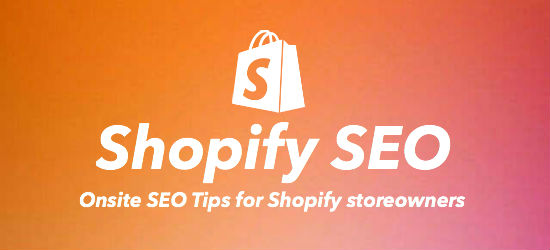
Before starting Printkeg, I built up a strong history in web development and SEO providing those services to hundreds of clients of my own for most of my adult life. Presently, I still do a little web consulting, but I remain more focused on maintaining and leading Printkeg, a digital print company that utilizes the e-commerce platform, Shopify.
So far, I have not found any killer SEO tools or apps specialized for Shopify, and I’m not really sure there ever can be since the search landscape changes so often and SEO tactics typically require manual labor rather than any automatic (or auto-magic) software can provide. Like other e-commerce giants, Shopify boasts how SEO worthy they are on their marketing pages, but I fear this may inhibit many store owners from carefully examining their actual SEO situation. Shopify focuses much less advertising on “SEO” than others like Bigcommerce and Volusion.
Shopify store owners are somewhat lucky in many regards. This is because Shopify does many good things concerning SEO (which will be pointed out throughout this article), but the system cannot possibly address everything because that responsibility rests on the shoulders of store owners and their staff. The following SEO tips are for them. Nothing in this article will be largely technical, and I still recommend hiring an outside SEO consultant (just make sure they are legitimate by getting references). Any good SEO consultant will advise that you address these issues anyways.
1. Better Content
Some of the pages in your Shopify page will be considered low quality based on the number of words and text. Collection pages, product pages, login in page, register page. These pages will require an appropriate amount of language that properly describes services, products, options and more. Don’t even think about keyword stuffing, but rather providing detailed descriptions that will help customers.
Some pages, like registration and the login, will require delving into the HTML and adding more text.
a. Write-ups on each page should be grammatically correct.
b. Each page should consist of at least 250 words but strive for 650 or more.
c. Provide as many details as you can on each product page.
d. Stay far away from duplicate pages.
e. Showcase benefits and features
f. Add reviews, specifications etc. Details, details, details.
g. Don’t scrape or copy from other websites. Rewrite everything. Make it better.
h. Fit in keywords, key phrases and long-tail keywords in a proper and non-intrusive manner.
2. Get Rid of Duplicate and Poor Content
Yes, this is a part of the #1 tip, but it is so critical to SEO, it must be addressed. Read this clip below which I quickly grabbed from Wikipedia.
Google has indicated it only takes a few pages of poor quality or duplicated content to lower traffic on an otherwise solid site. The search engine recommends such pages be removed, blocked from being indexed by the search engine, or rewritten. Keep in mind, Matt Cutts, head of webspam at Google, warns that rewriting duplicate content so that it is original may not be enough to recover from Panda, the rewrites must be of sufficiently high quality, as such content brings “additional value” to the web. Content that is general, non-specific, and not substantially different from what is already out there should not be expected to rank well.
Panda, the algorithm update that penalizes thin and duplicate content, was devastating to many websites and no one was safe. Even large public enterprises were thrashed so small businesses and blogs with bad content didn’t have a prayer. Although we were not destroyed by Panda (Penguin hit us pretty hard), we still struggle with duplicate content that SEO tools such as Raven and Moz don’t seem to be picking up on, but we worry Google may feel differently. We are constantly rewriting so every page will be helpful, unique and relevant to visitors.
a. Each page needs to be over 250 words. Strive for more than 650. Pages with poor or duplicate content must be removed right away. Make sure all collection pages and product pages have enough information.
b. Use Moz or Raven (or both) to help you locate any web pages with duplicate content. Remove them or change them.
c. Take the time out yourself, rely on an employee or hire a professional to write unique and helpful descriptions for all products. Do not copy (even with permission) content.
d. Check for duplicate meta title and description tags. Shopify offers a nice feature that allows store owners to copy a product that might have similar traits to a new product. It can be annoyingly easy to forget rewriting those title and description tags.
3. Watch Your Image Sizes and Download Speeds
It seems all e-commerce platforms and websites face obstacles with large image files especially for store administrators inexperienced with graphics manipulation. Business owners must balance crisp images and low file size in an effort to serve customers well while fostering an acceptable user experience. Slow websites suck and search engine companies know that.
Shopify offers so many ways of adding images to your website: Homepage banners, collection pages, product image variants, and product description areas. Beginners love rotating banners which can lower sales conversion rates, collection pages can become cumbersome to download which can lower sales conversions and product pages can be overloaded with image variants which can lower sales conversions. Are you seeing the pattern yet?
Do whatever you can to keep your file sizes low and download speeds fast. There are many ways to accomplish this.
a. Use Adobe Photoshop’s “Save for Web” feature and choose medium to low quality. If you do not have Photoshop, try GIMP, Fotoflexer, PicMonkey or Pixlr.
b. Hire a legitimate designer to build graphics in an optimized format.
c. Learn about the popular image file types. Recognize the difference between GIF, JPG and PNG and use them as effectively as possible.
d. Keep your products per page in the collections page down to a minimum.
e. Be selective with how many images you are using per product page.
f. Try not using the homepage animated banner feature that many Shopify templates offer. Stick to only one image.
g. Be sure to name image files smartly and always optimize ALT tags. No keyword stuffing. Just describe what is in the image. Read Google’s image guidelines.
h. Beware using decorative images throughout the template. Only use images for products and your company logo. The rest of the theme should remain as image free as possible.
i. Think about removing the related products feature. That feature alone was adding 1 to 2 seconds to speed tests performed on our product pages. That’s crazy.
j. On their blog, Shopify does write about image optimization that you should read.
4. Careful with the Apps
When first reviewing Shopify as a possible solution, I admit that the app market was overwhelmingly exciting, and those feelings dissipate once the realization sets in that not all apps are created equal. I’ve already complained about the quality of some of the apps, and that extends to the negative impact those buggers can have on SEO.
Many apps require extra code or scripts to be added to your template. These extra tidbits of code can swell up the download time dramatically, so it is absolutely essential that you do continuous speed tests to ensure your website is running smoothly. I have removed a number of apps that I loved due to the seconds of extra load time they caused. It has been proven that slower sites lose customers.
a. Only keep apps that are absolutely necessary. Apps that only affect the “back end” (your admin section) usually won’t slow the actual website down.
b. Due diligence in website speed testing is a must in order to identify apps slowing down the website. Among many other culprits, an app’s effect of download time could be devastating.
c. Be careful when code must be manually or auto-magically added to your website theme or template. These scripts could hinder website performance as stipulated above.
d. Be sure to remove any code added to a theme manually if you ever remove the app. Many apps do not remove their own code and could eventually build up unnecessary download requests.
5. Choose a Responsive Theme
As of April 21st, 2015, mobile-friendly websites started to receive a boost in mobile-based searches on Google in what is now called Mobilegeddon. This trend will likely have more impact as time progresses (read this article at Search Engine Land). What does this mean? Your website absolutely needs to be responsive, a robust design allowing a website to be fully functional on any screen size, or risk losing a ton of traffic and rankings.
a. Shopify has many responsive themes to choose from. So choose one right now.
b. Be sure to also remain observant of image sizes, another important factor to truly being mobile friendly.
c. Make sure the apps you download work well on all screens.
d. Use Google’s mobile-friendly test to help determine how mobile friendly your website is.
6. Don’t Forget Backlinks
I don’t want to harp on this one too much since we are focusing more onsite. However, building good content, advertising, promoting, guest blogging, social networking are all very important aspects of SEO. The “If you build it, they will come” approach will not work even if your website is top notch. The more niche your product is, the less trouble you will have been discovered through organic SEO.
Conclusion
Good luck with your new Shopify website. Remember, Shopify is an amazing platform with some pre-packaged SEO benefits; however, it is not a perfect system. The heart and effectiveness of all SEO are reliant on your team building a quality store with awesome products.


